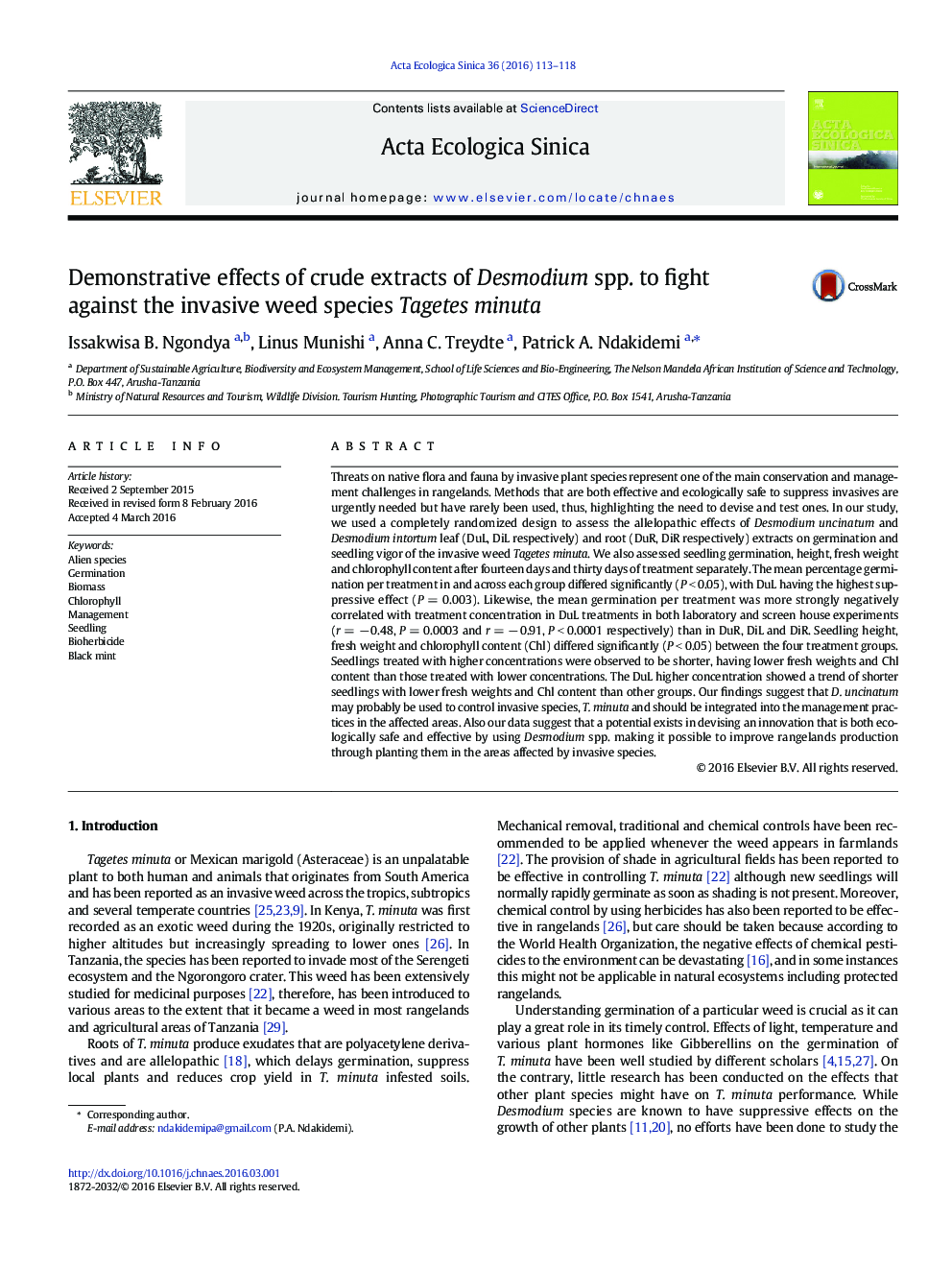| Article ID | Journal | Published Year | Pages | File Type |
|---|---|---|---|---|
| 4379754 | Acta Ecologica Sinica | 2016 | 6 Pages |
Abstract
Threats on native flora and fauna by invasive plant species represent one of the main conservation and management challenges in rangelands. Methods that are both effective and ecologically safe to suppress invasives are urgently needed but have rarely been used, thus, highlighting the need to devise and test ones. In our study, we used a completely randomized design to assess the allelopathic effects of Desmodium uncinatum and Desmodium intortum leaf (DuL, DiL respectively) and root (DuR, DiR respectively) extracts on germination and seedling vigor of the invasive weed Tagetes minuta. We also assessed seedling germination, height, fresh weight and chlorophyll content after fourteen days and thirty days of treatment separately. The mean percentage germination per treatment in and across each group differed significantly (P < 0.05), with DuL having the highest suppressive effect (P = 0.003). Likewise, the mean germination per treatment was more strongly negatively correlated with treatment concentration in DuL treatments in both laboratory and screen house experiments (r = â 0.48, P = 0.0003 and r = â 0.91, P < 0.0001 respectively) than in DuR, DiL and DiR. Seedling height, fresh weight and chlorophyll content (Chl) differed significantly (P < 0.05) between the four treatment groups. Seedlings treated with higher concentrations were observed to be shorter, having lower fresh weights and Chl content than those treated with lower concentrations. The DuL higher concentration showed a trend of shorter seedlings with lower fresh weights and Chl content than other groups. Our findings suggest that D. uncinatum may probably be used to control invasive species, T. minuta and should be integrated into the management practices in the affected areas. Also our data suggest that a potential exists in devising an innovation that is both ecologically safe and effective by using Desmodium spp. making it possible to improve rangelands production through planting them in the areas affected by invasive species.
Related Topics
Life Sciences
Agricultural and Biological Sciences
Ecology, Evolution, Behavior and Systematics
Authors
Issakwisa B. Ngondya, Linus Munishi, Anna C. Treydte, Patrick A. Ndakidemi,
